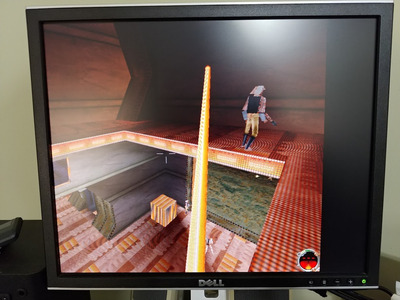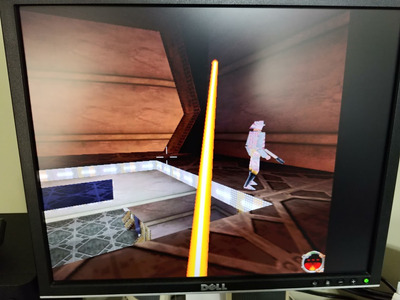First post, by Ozzuneoj
- Rank
- l33t
Okay, yet another thread about a defective Voodoo 2. They're getting much harder to come by, so I'm more inclined to try to fix any that I find. This one had no damaged components as far as I could tell. There's a couple of dings in some traces on the back, but I made sure they weren't broken weren't shorting to each other and they seem okay.
When I first tried this card, it was only detected as "PCI Card" in Windows 98SE. This is my tester system which has separate Windows folders for each type of hardware I frequently test, so any Voodoo 2 should simply work (using Fastvoodoo drivers). I took the card out, cleaned the contacts with an eraser and double checked that there were no bent legs on the main chips. I did notice that one pin on the pixelFX chip had a slight bend in it (9th pin down from "128") so I straightened it out a bit. It still isn't perfectly straight but it definitely isn't touching anything.
I put the card back in and when Windows loaded the card was already in device manager, as if it had been there all along (how it should be on this system).
In games however, I get a lot of graphical corruption and it shimmers and moves a lot in Descent 3 (Glide). Another game I tested was a demo of Jedi Knight: Mysteries of the Sith, from 1997, which has much lower requirements.
I can't seem to find the registry entries that people use to disable TMUs for testing purposes... I've read about them, and I've found the 3dfx key in my registry but nothing there mentions disabling a TMU, and no one online that I can find has ever actually said what to edit to do this. My Googles have failed me.
The extent of my troubleshooting has been the following:
* Checked the card with my FLIR One while it's running to see if there are any obviously overheating memory chips, and I haven't seen anything out of the ordinary.
* Pressed on various chips to find any sign of a bad connection. This revealed something rather interesting. When anything is near (not even touching) the upper left corner of the right side TMU, it changes the look of the graphical corruption. I get the same thing with the SMD components on the opposite side of the PCB in that area. If I squeeze the chip\board in that spot the corruption stops moving and becomes static, but still isn't better. Strangely, one of the memory chips on the back also seems to respond to being touched in a similar way but not as dramatically. Since it happens without even touching it, I'm guessing this is some strange effect of EMI or static? I wanted to try with something non-conductive so I tried it with the bristles of a tooth brush (which I use for cleaning cards, not my teeth) and this too seemed to cause the corruption to change, even if the bristles weren't quite touching anything. Very odd.
* I rebooted and tried Jedi Knight FIRST and to my amazement it had no corruption! After playing with some settings however, the corruption came back to certain textures. Ever time I went to the menu (not accelerated) and returned to the game the corruption would switch to other textures. I'm guessing this is video memory related and the reason it works the first time is because the memory is empty, and after that it is filled and is loading data to a bad chip?
Here's a gallery with some pictures:
https://photos.app.goo.gl/dZp6rhEmAz2H35Un6
I'm hoping this is a sign of memory problems, because I think I can replace one of those. I'm far less confident about replacing a TMU... What do you guys think?
Now for some blitting from the back buffer.

